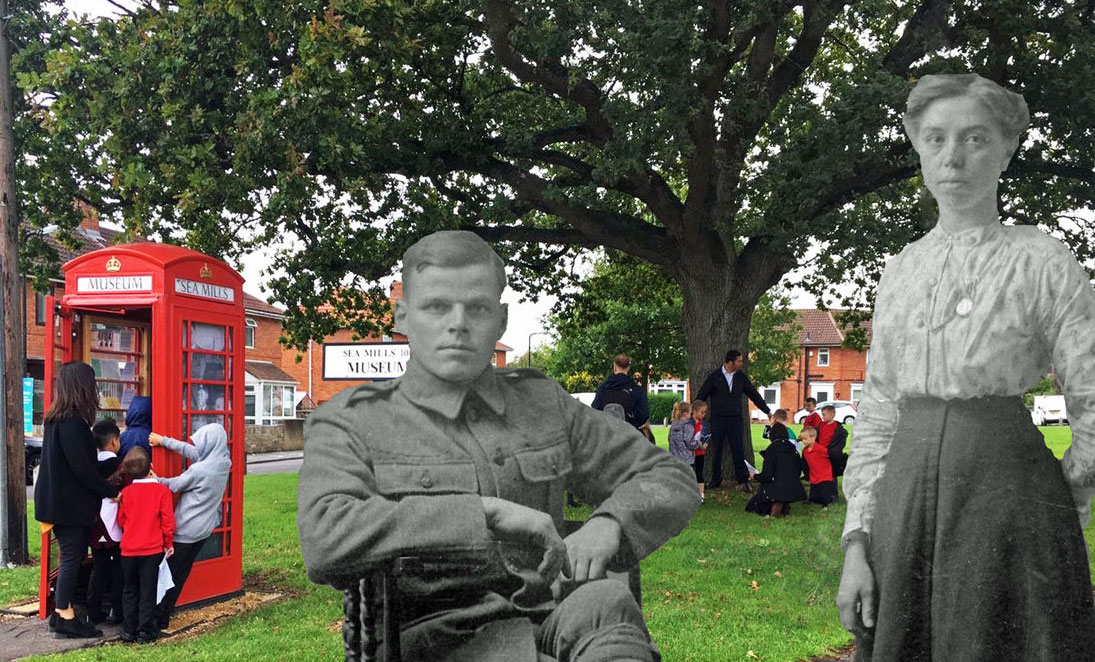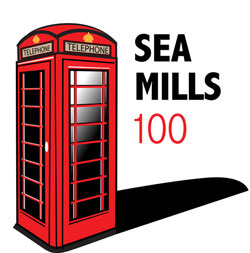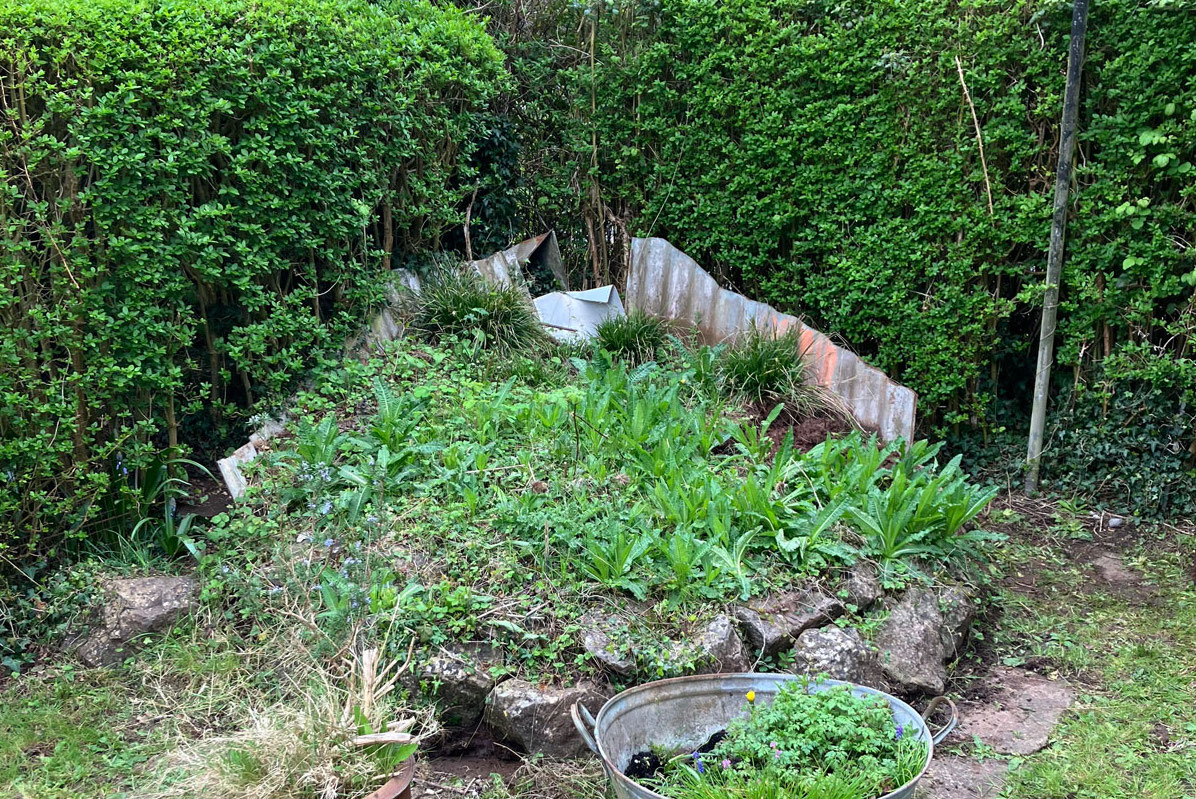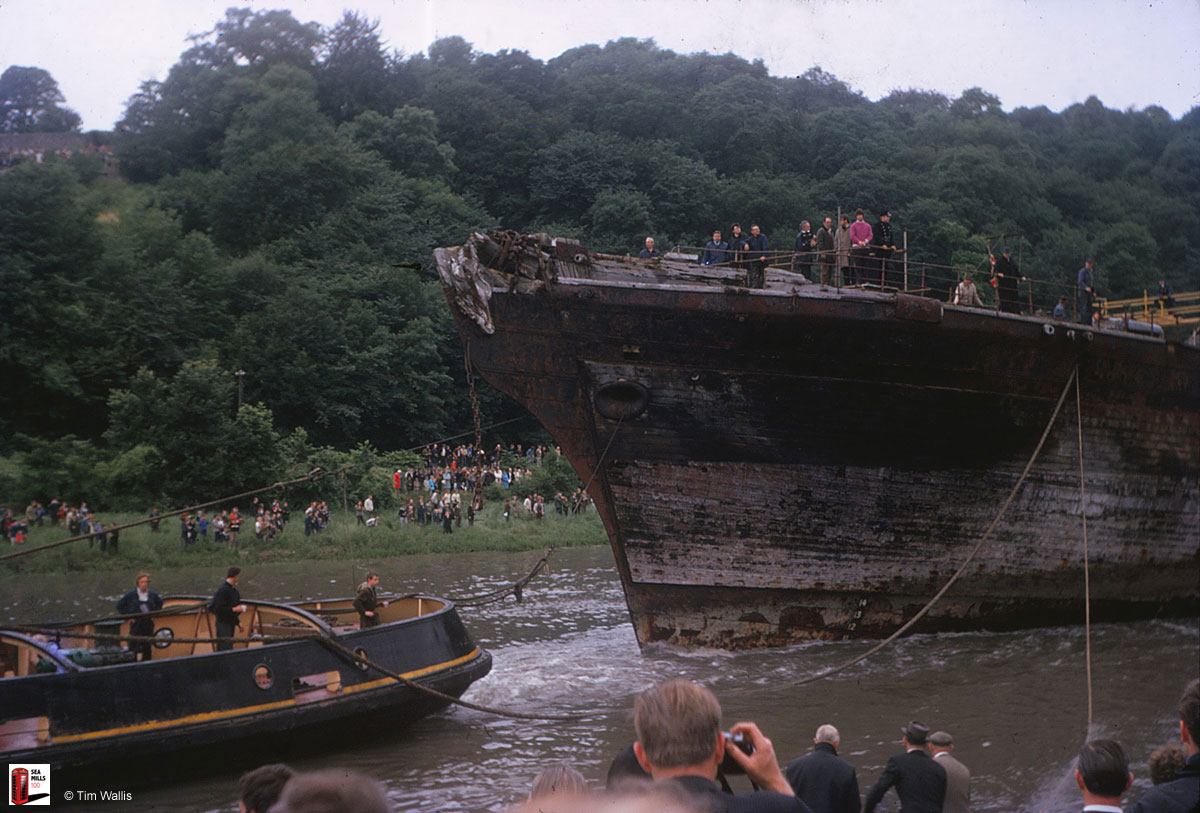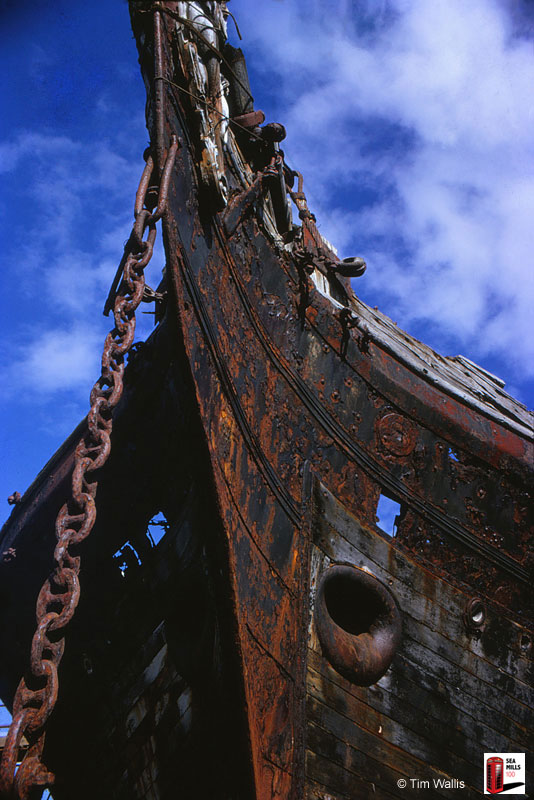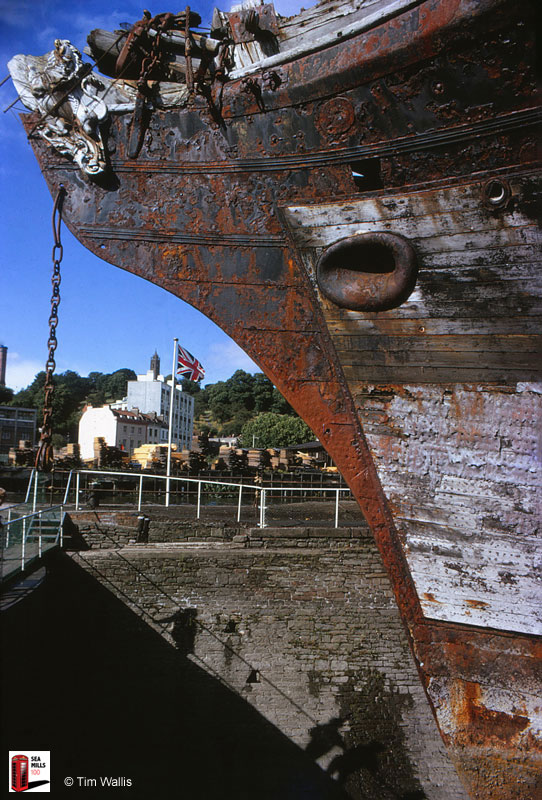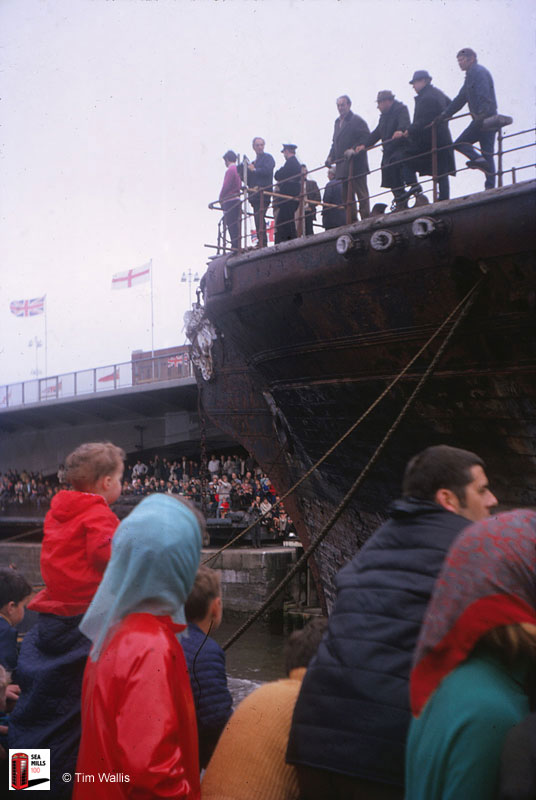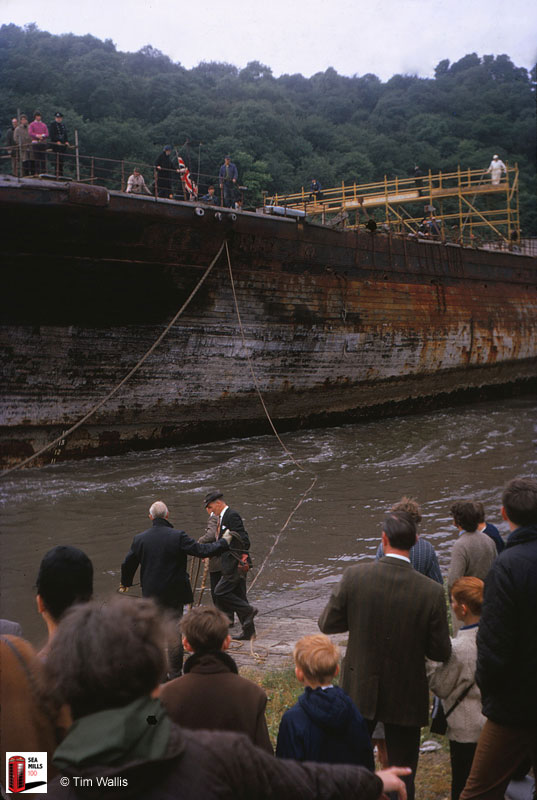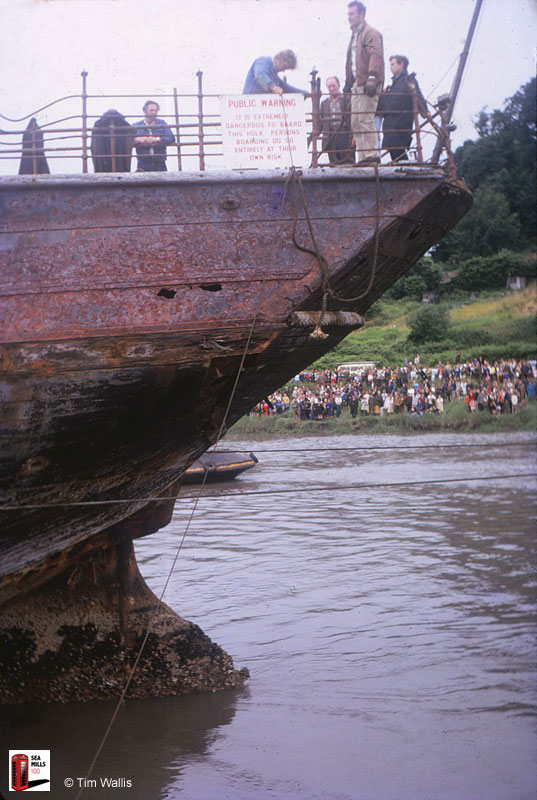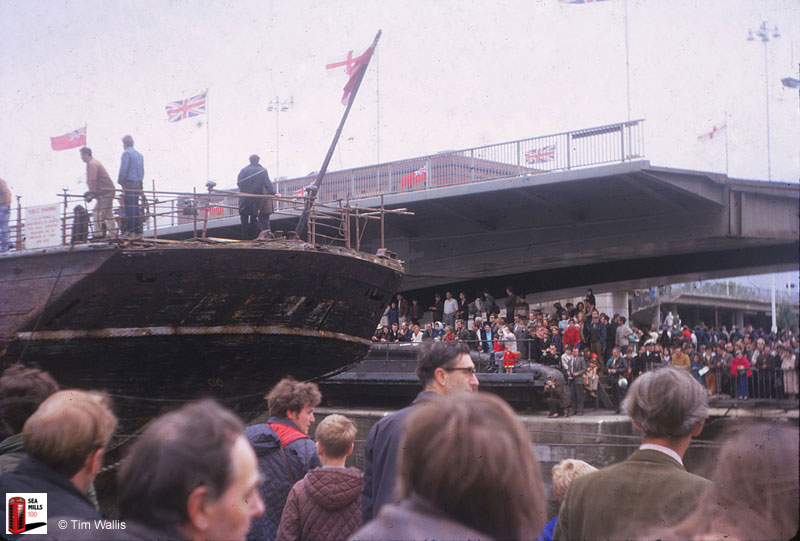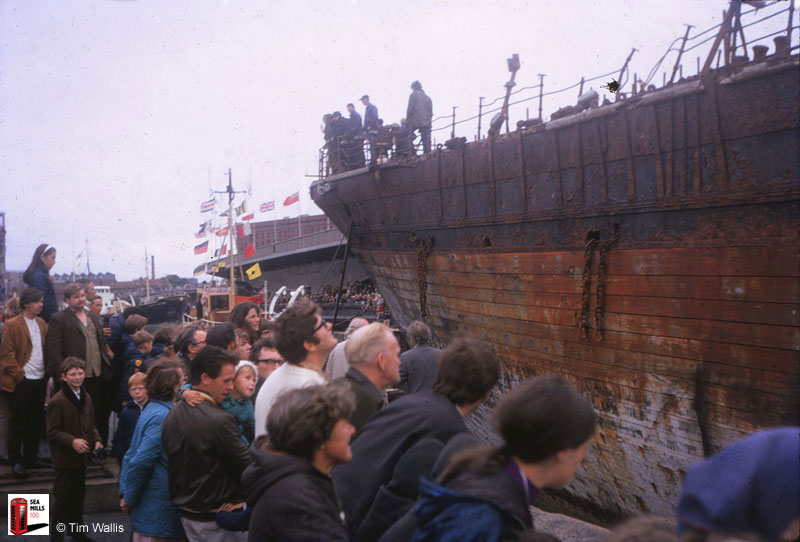A resident of West Parade, Simon Preece recently wrote to Sea Mills 100 asking for help to identify this structure hiding in his garden rockery.
We think it’s one of the many shelters families had in their gardens to protect them during air raids in WW2. There was an public shelter on Sea Mills Square, underneath where the children’s playground is now. There was also one for the pupils and teachers at the school in Riverleaze.
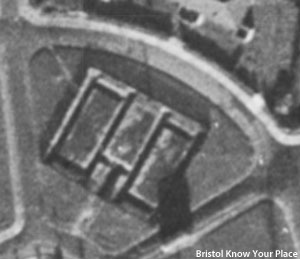
You can see the outline of the public shelter on the 1946 aerial photograph of Bristol available at Bristol Know Your Place. If you explore the map you’ll see a lot of other WW2 infrastructure too. There are water tanks on the Pentagon and huts for US troops on the golf course.
Not everyone used the public shelter. People would not have wanted to walk far at night during an air raid, so a lot of people built their own.
We think Simon’s shelter would have been a bit like this one that Keith Howell remembers in his garden in Sylvan Way. Keith sent us this diagram (right) which shows how they were constructed.
Keith remembers, “Air raids at night were a regular occurrence. We were issued with an Anderson air-raid shelter to be shared with the Gale family next door. Its erection involved digging a hole, bolting together the corrugated iron sheets to form a small hut in place within the hole, fastening seats along the two sides and finally covering the curved roof with turf. This must have been used many times during the worst of the Bristol air-raids even though Sea Mills was not a major target for the bombing. We could see, from the open door of the shelter, the light of the fires in Bristol city centre, 5 miles away.”
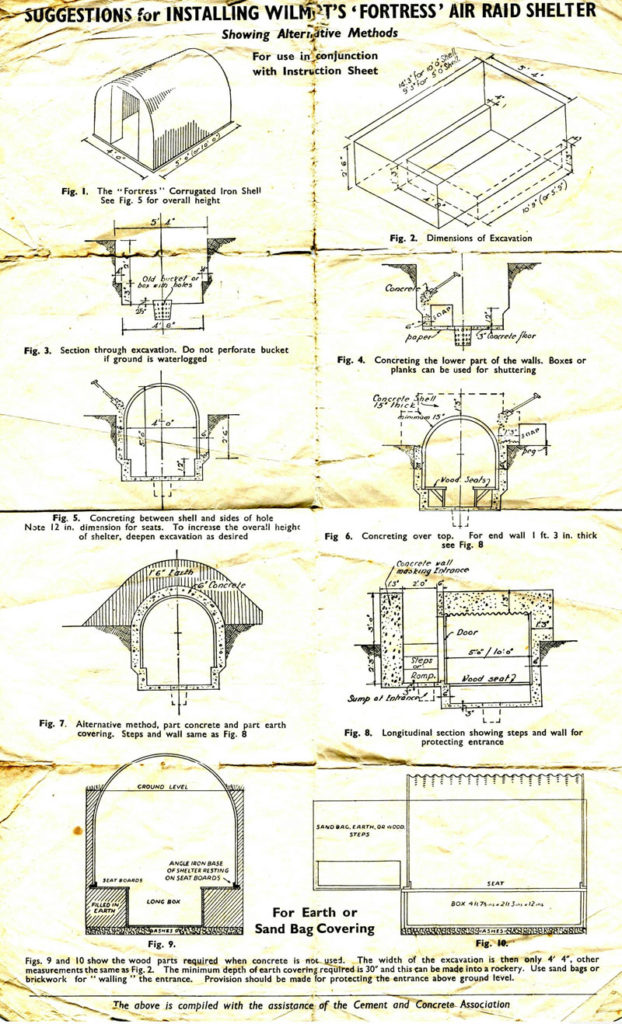
Simon has cleared the area around his shelter and you can see where the corrugated metal goes into the ground. It looks like someone at sometime has at least partly filled the hole with concrete, and cut off most of the metal at ground level.
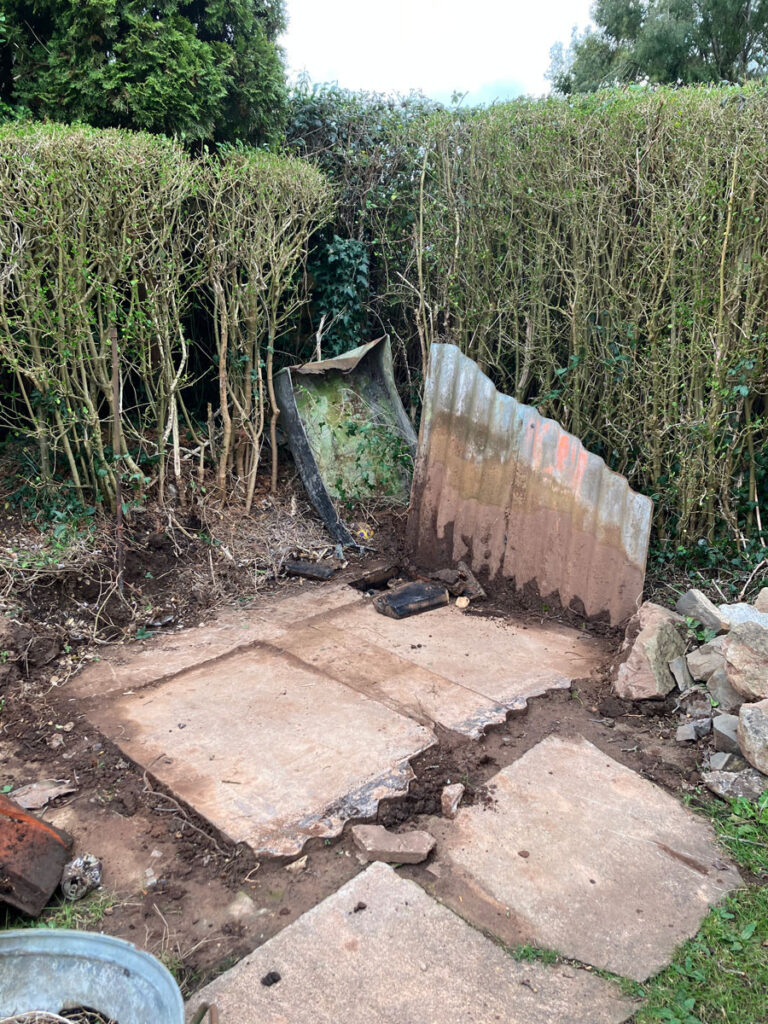
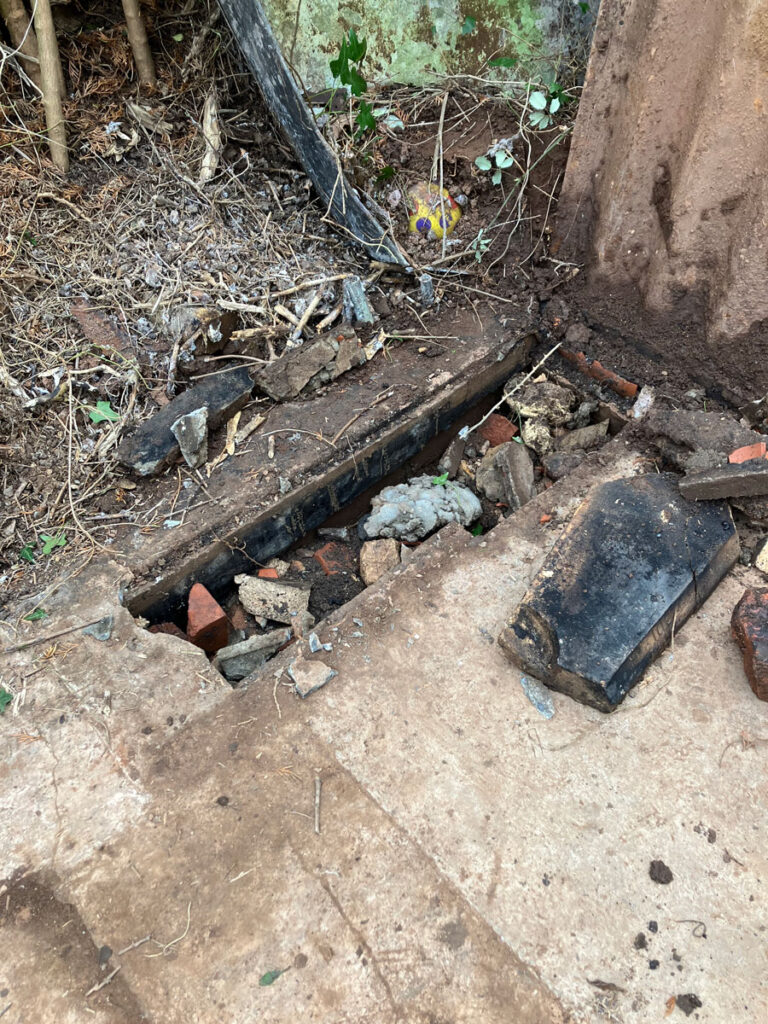

Photos (including main image): Simon Preece
We know that quite a few air raid shelters of various types still exist in Sea Mills. Some people have repurposed them as sheds. If you have one we’d love to see pictures,. We’d also like to hear your memories of them. Please email us info@seamills100.co.uk
If you would like to know more about WW2 in Bristol, Bristol Museums and Archives have a set of interesting resources here. There is also a research guide to help you do your own research at Bristol Archives which holds a large amount of original WW2 documents which can be viewed in the archive searchroom in Hotwells.
